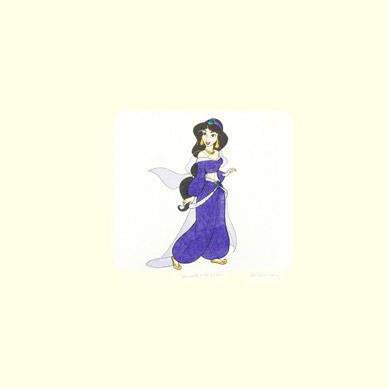Etching is traditionally the process of using strong acid or mordant to cut into the unprotected parts of a surface with a metal plate to create a design in intaglio (incised) in the material. As a method of printmaking, it is, along with engraving, the most important technique for old master prints, and remains in wide use today. Etching, a process applied to printmaking is believed to have been invented by Daniel Hopfer (circa 1470–1536) of Augsburg, Germany. Hopfer was a craftsman who decorated armor in this way, and applied the method to printmaking, using iron plates (many of which still exist). Apart from his prints, there are two proven examples of his work on armor: a shield from 1536 now in the Real Armeria of Madrid and a sword in the Germanisches National Museum of Nuremberg. An Augsburg horse armor in the German Historical Museum, Berlin, dating to between 1512 and 1515, is decorated with motifs from Hopfer's etchings and woodcuts, but this is no evidence that Hopfer himself worked on it, as his decorative Etching prints were largely produced as patterns for other craftsmen in various media.
Etching making switched to copper plates probably in Italy, and thereafter etching soon came to challenge engraving as the most popular medium for artists in printmaking. Its great advantage was that, unlike engraving where the difficult technique for using the burin requires special skill in metalworking, the basic technique for creating the image on the plate in etching is relatively easy to learn for an artist trained in drawing. On the other hand, the handling of the ground and acid need skill and experience, and are not without health and safety risks, as well as the risk of a ruined plate.
Etching of prints was further developed by Jacques Callot (1592–1635), who made important technical advances in etching technique. He developed the échoppe, a type of etching-needle with a slanting oval section at the end, which enabled etchers to create a swelling line, as engravers were able to do. Callot also appears to have been responsible for an improved, harder, recipe for the etching ground, using lute-makers' varnish rather than a wax-based formula. This enabled lines to be more deeply bitten, prolonging the life of the plate in printing, and also greatly reducing the risk of "foul-biting", where acid gets through the ground to the plate where it is not intended to, producing spots or blotches on the image. Previously the risk of foul-biting had always been at the back of an etcher's mind, preventing too much time on a single plate that risked being ruined in the biting process. Now etchers could do the highly detailed work that was previously the monopoly of engravers, and Callot made full use of the new possibilities. Callot also made more extensive and sophisticated use of multiple "stoppings-out" than previous etchers had done. This is the technique of letting the acid bite lightly over the whole plate, then stopping-out those parts of the work which the artist wishes to keep light in tone by covering them with ground before bathing the plate in acid again. He achieved unprecedented subtlety in effects of distance and light and shade by careful control of this process. Most of his prints were relatively small—up to about six inches or 15 cm on their longest dimension, but packed with detail. One of his followers, the Parisian Abraham Bosse, spread Callot's innovations all over Europe with the first published manual of etching, which was translated into Italian, Dutch, German and English. The 17th century was the great age of etching, with Rembrandt, Giovanni Benedetto Castiglione and many other masters. In the 18th century, Piranesi, Tiepolo and Daniel Chodowiecki were the best of a smaller number of fine etchers. In the 19th and early 20th century, the Etching revival produced a host of lesser artists, but no really major figures.
Etching is still widely practiced today. Copper is a traditional metal, and is still preferred, for etching, as it bites evenly, holds texture well, and does not distort the color of the ink when wiped. Zinc is cheaper than copper, so preferable for beginners, but it does not bite as cleanly as copper does, and it alters some colors of ink. Steel is growing in popularity as an etching substrate. Increases in the prices of copper and zinc have steered steel to an acceptable alternative. The line quality of steel is less fine than copper, but finer than zinc. Steel has a natural and rich aquatint. The type of metal used for the plate impacts the number of prints the plate will produce. The firm pressure of the printing press slowly rubs out the finer details of the image with every pass-through. With relatively soft copper, for example, the etching details will begin to wear very quickly, some copper plates show extreme wear after only ten prints. Steel, on the other hand, is incredibly durable. This wearing out of the image over time is one of the reasons etched prints created early in a numbered series tend to be valued more highly. An artist thus takes the total number of prints he or she wishes to produce into account whenever choosing the metal.
Etching making for prints, using today's process, the plate is done by covering the surface with printing ink, then rubbing the ink off the surface with tarlatan cloth or newsprint, leaving ink in the roughened areas and lines. Damp paper is placed on the plate, and both are run through a printing press; the pressure forces the paper into contact with the ink, transferring the image. Unfortunately, the pressure also subtly degrades the image in the plate, smoothing the roughened areas and closing the lines; a copper plate is good for, at most, a few hundred printings of a strongly etched imaged before the degradation is considered too great by the artist. At that point, the artist can manually restore the plate by re-etching it, essentially putting ground back on and retracing their lines; alternatively, plates can be electro-plated before printing with a harder metal to preserve the surface. Zinc is also used, because as a softer metal, etching times are shorter; however, that softness also leads to faster degradation of the image in the press.

 Vendor:Winnie the Pooh - Limited Edition Etching with Hand Tinted Coloring on Paper by Disney StudiosArt Deals
Vendor:Winnie the Pooh - Limited Edition Etching with Hand Tinted Coloring on Paper by Disney StudiosArt Deals
 Vendor:Yosemite Sam - Set of 12 Limited Edition Etching with Hand Tinted Coloring on Paper by Warner Bros.Art Deals
Vendor:Yosemite Sam - Set of 12 Limited Edition Etching with Hand Tinted Coloring on Paper by Warner Bros.Art Deals





